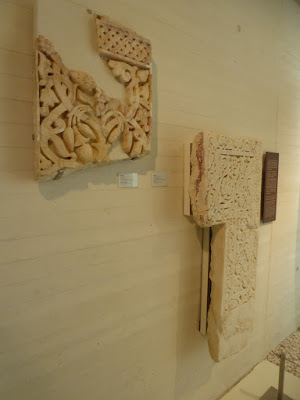The folks now known as Moors were from the Caliphate of Damascus, and in the early 8th century their armies had taken just about all of the southern Mediterranean lands, much of Turkey, all of north Africa, the Iberian peninsula (Spain and Portugal), Sicily, and also a large chunk of France, for good measure. The Frankish king, Charles Martel, aka The Hammer, turned them back at Tours (some say Poitiers) in 732. When things soured for the Umayyids in Damascus, they decided that their Caliphate was that of al-Andalusia, as they called Spain, and in 936, Abd al-Rahman III began construction of Madinat al-Zahra, which was to become his capital. Things soured further within a few generations, and by the 11th century, Madinat al-Zahra was abandoned and plundered. FWIW, Madinat al-Zahra lies only a few miles outside of Cordoba, which was in the 10th century by far Europe's largest city. Much archaeological work, research and reconstruction, has been going on at Madinat al-Zahra, and much of it is open to the public.
 |
| The museum/archaeology complex at Madinat al-Zahra |
 |
| Nicely landscaped |
 |
Looking toward the ruins, up the hill, below the yellow building;
there is a shuttle that takes you there after you see the museum |
 |
The monastery of St. Jerome, where most of Madinat al-Zahra's
stones ended up |
 |
| In the archaeology complex, open to view; spare parts |
 |
Helpful model; the museum is not huge, but well done, and in
English too |
 |
| Thus |
 |
| Chamber pot; seriously |
 |
| Now up at the ruins |
 |
Administrative and residential portions are open; this is the
entrance to the residence of the prime minister |
 |
| Outskirts of Cordoba to the left |
 |
| In Spain, you're never very far from some castle or another |
 |
| Ceremonial entrance to Madinat al-Zahra |
 |
| Administrative buildings |



















No comments:
Post a Comment